Gordon Murray Automotive T.50
Have you ever heard of Gordon Murray? If not, you might want to take a look at his personality of modern automotive history. He became best known as the lead developer behind the now legendary supercar McLaren F1. But the South African-born designer is also responsible for other projects such as the Brabham BT42 for the 1973 Formula 1 season as well as subsequent models up to the BT55. The Brabham BT46B from 1978, which is still controversial today, also falls into this phase. This car used a huge fan to suck the air under the car floor and send it to the rear, thereby significantly increasing the downforce. Remember this technology, Gordon Murray used it again later. After his time with Brabham, he developed Formula 1 cars for McLaren, including the very successful MP4/4. At the same time, he also developed the Rocket as a road-legal single-seater monoposto racing car for the Light Car Company. Since 2005, he has been working on new concepts in his own company, Gordon Murray Design, which led, among other things, to the ultra-light city car T.25, or T.27 as an electric version. Now a brand new sports car concept with the name T.50 follows, which will go into small series production at the subsidiary Gordon Murray Automotive. The name comes from the fact that this is the fiftieth car project he has designed and that he has been working as a car designer for exactly 50 years now.
After many years of development and several announcements within the last 18 months, the new T.50 finally made its debut now. Gordon Murray’s cars aren’t just about lightweight construction, but also about clever packaging, i.e. the arrangement of all components and the occupants in the most efficient way. In the new supercar, he therefore adopted the seating arrangement already established in the McLaren F1, with the driver in the center and one co-driver on each side of him or her. Directly behind the cockpit is the V12 engine developed in cooperation with Cosworth, which generates 663 hp and 467 newtonmeters of torque from 3.9 liters of cubic capacity and also revs up to 12,100 rpm – with a tare weight of only 178 kilograms. A naturally aspirated engine in a production vehicle has never revved higher. In the T.50, this performance is matched by a kerb weight of just 986 kilograms. A Direct Path Induction System directs the sound even more clearly into the cockpit and acoustically enhances the driving pleasure. Specially designed active carbon panels in the air scoop on the roof, which are activated by the accelerator pedal position, act almost like loudspeakers. If this extaordinary data isn’t enough for you, you should urgently take a look at the aerodynamics of the T.50.
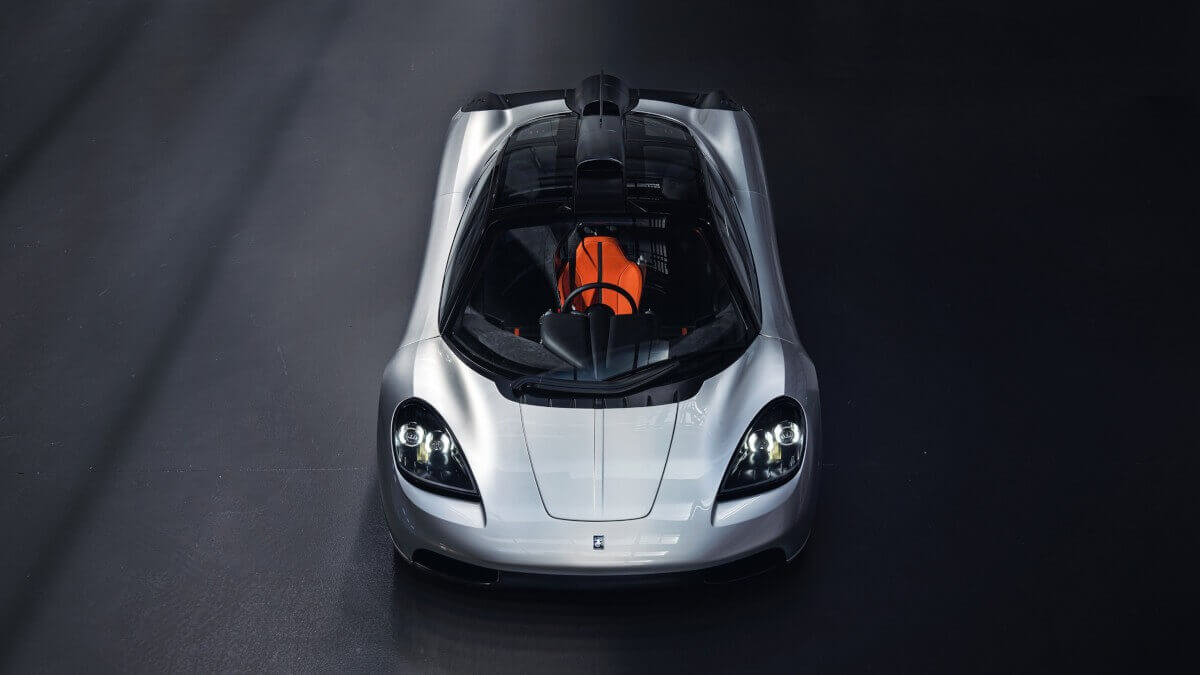



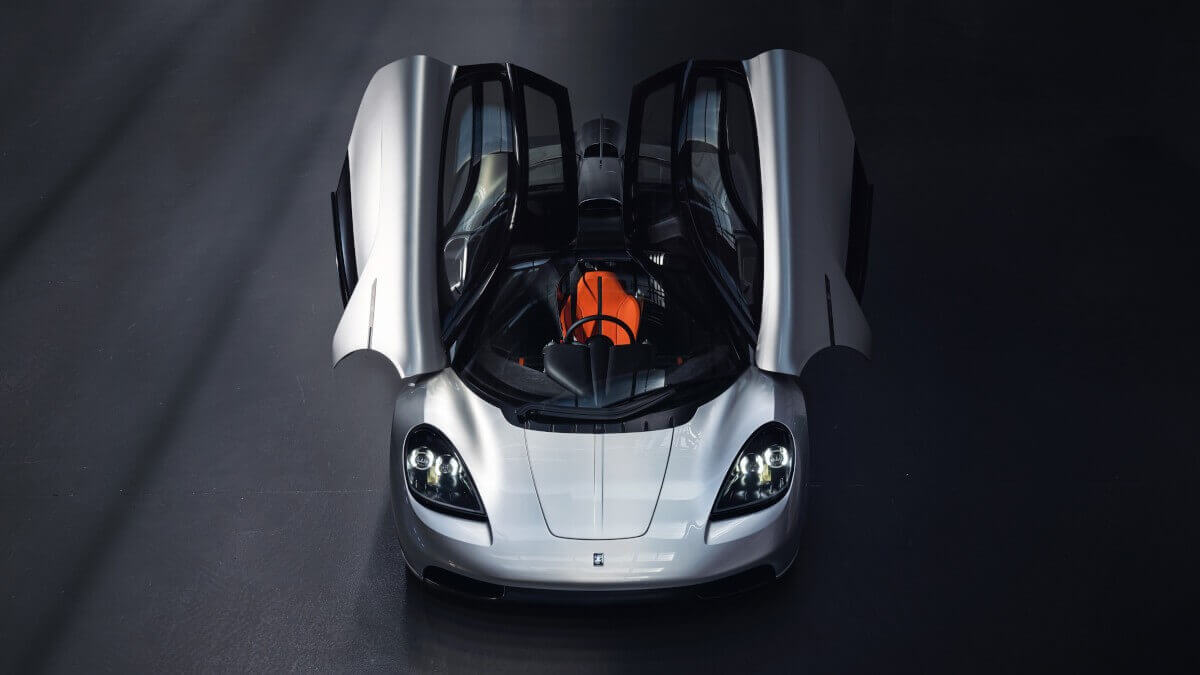



















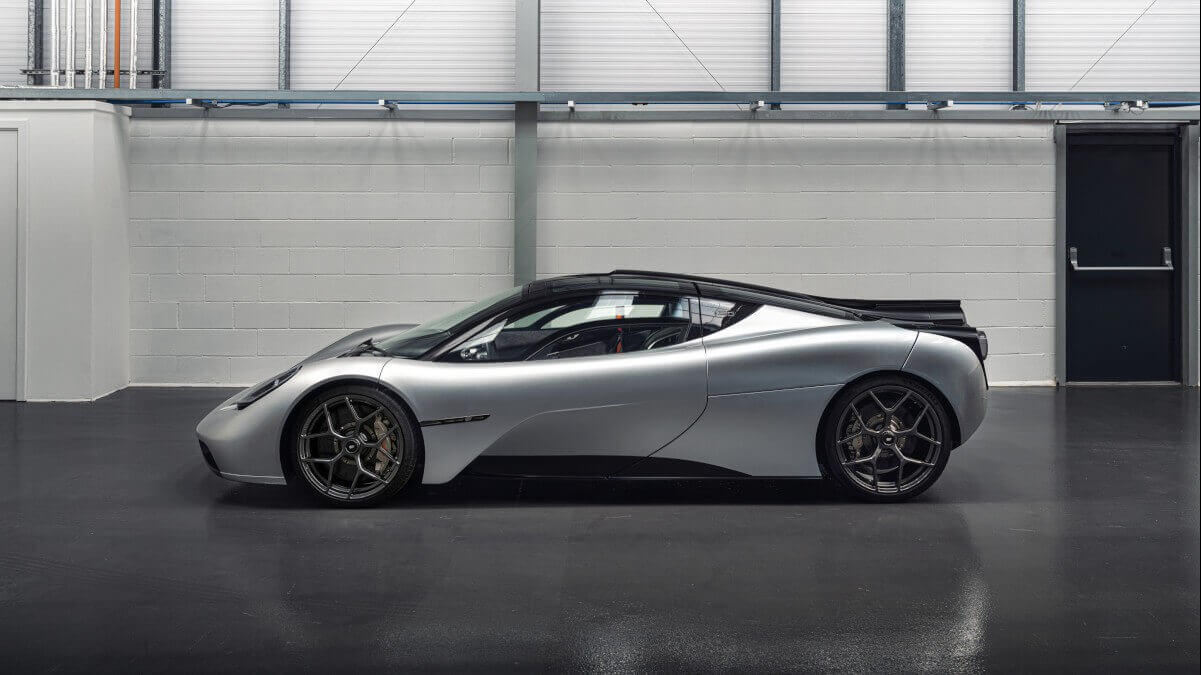



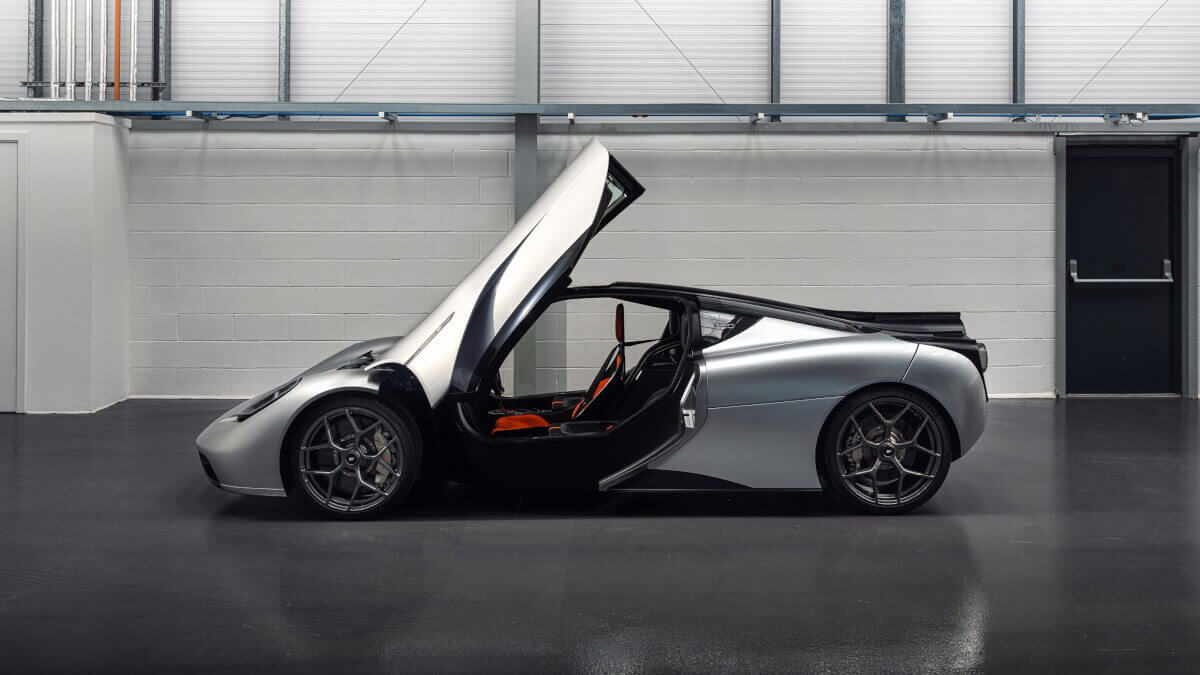







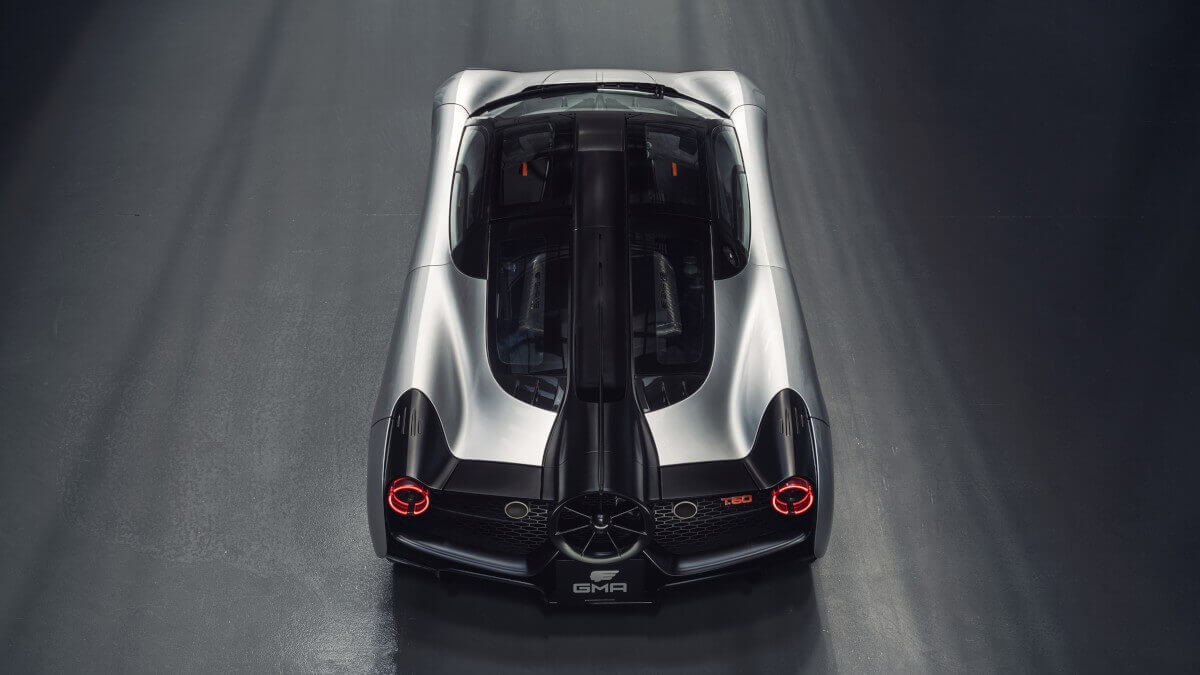







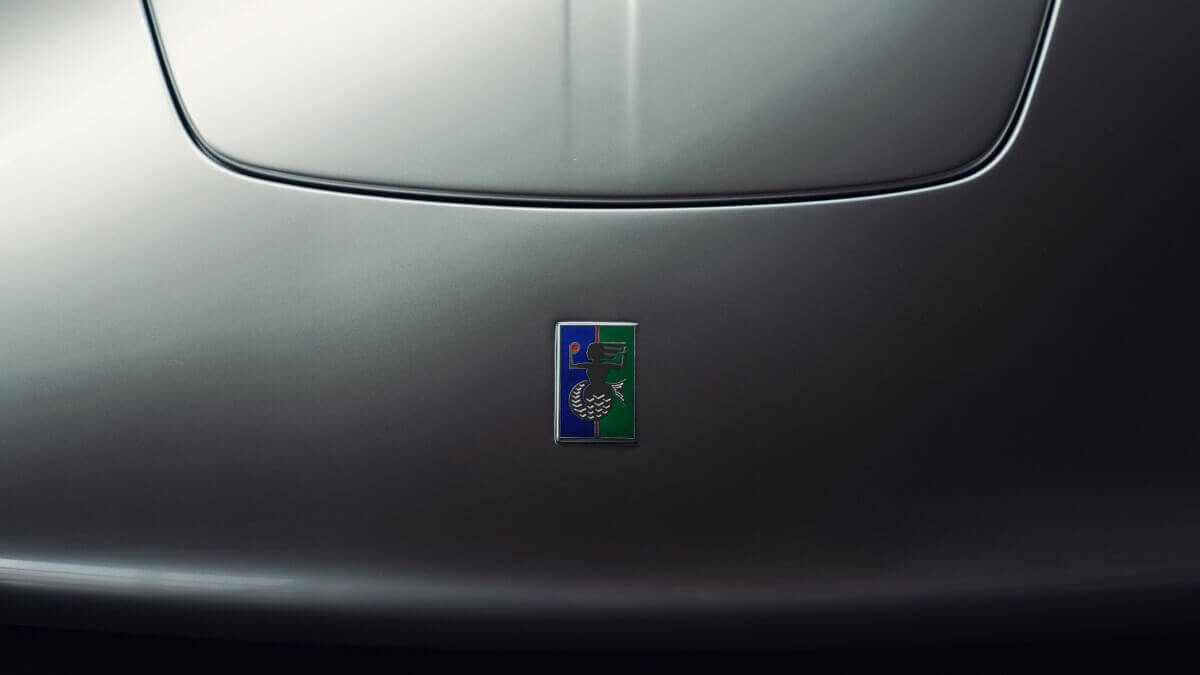



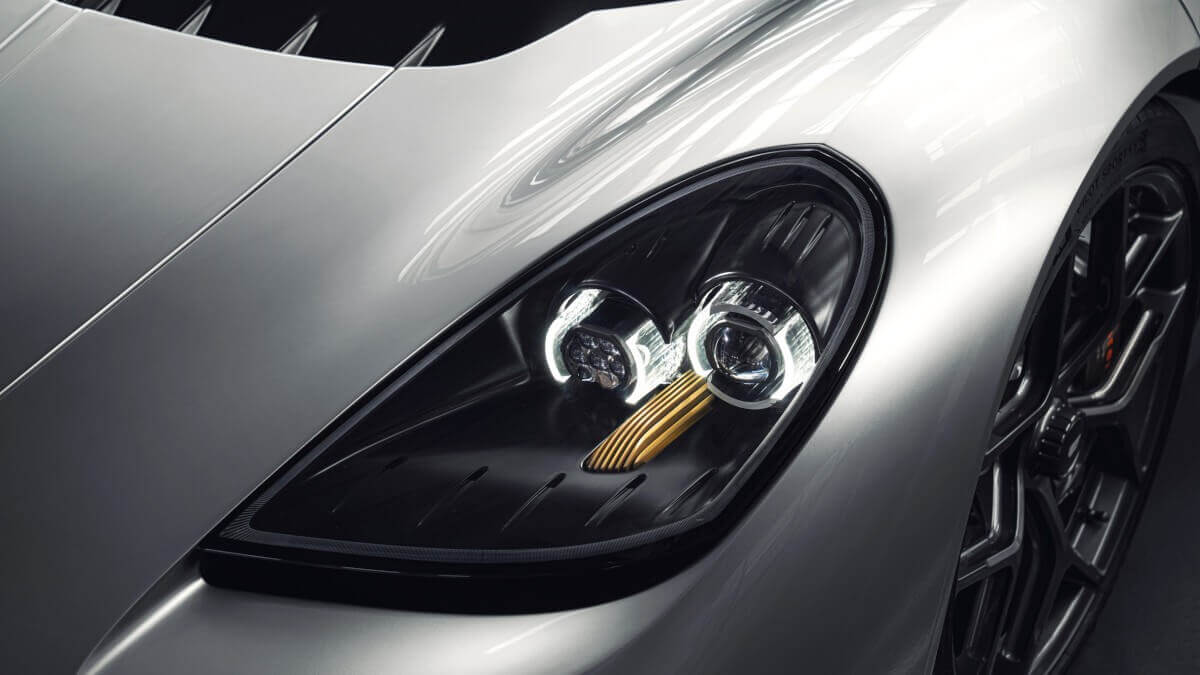



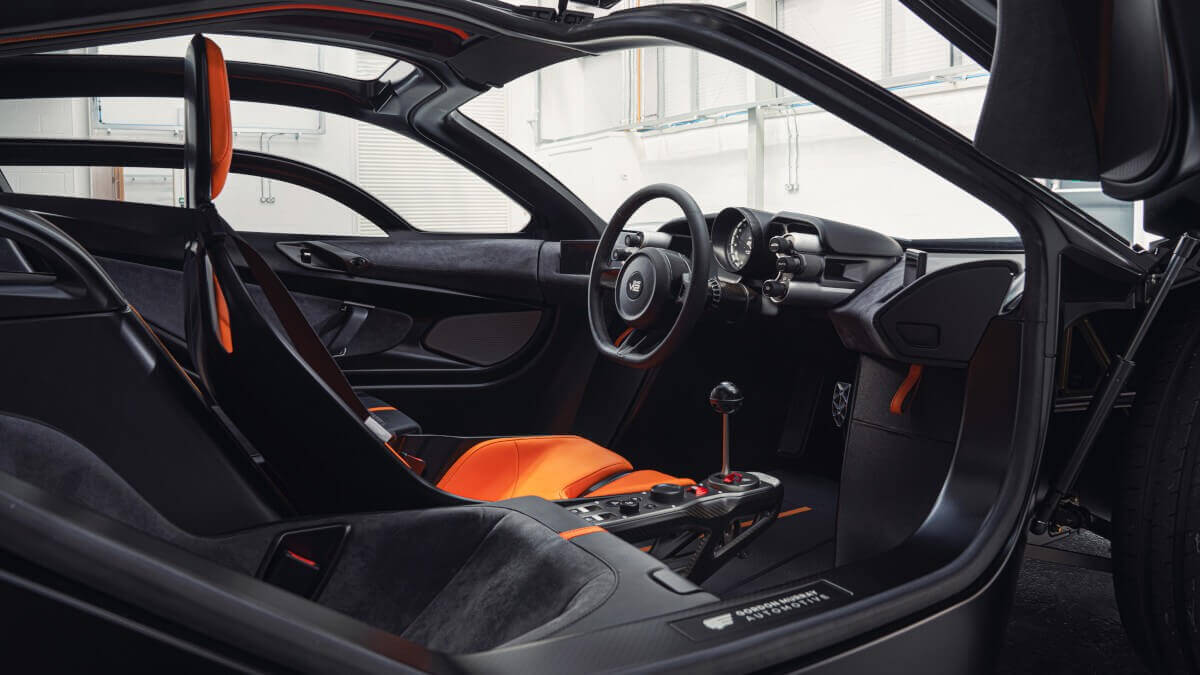



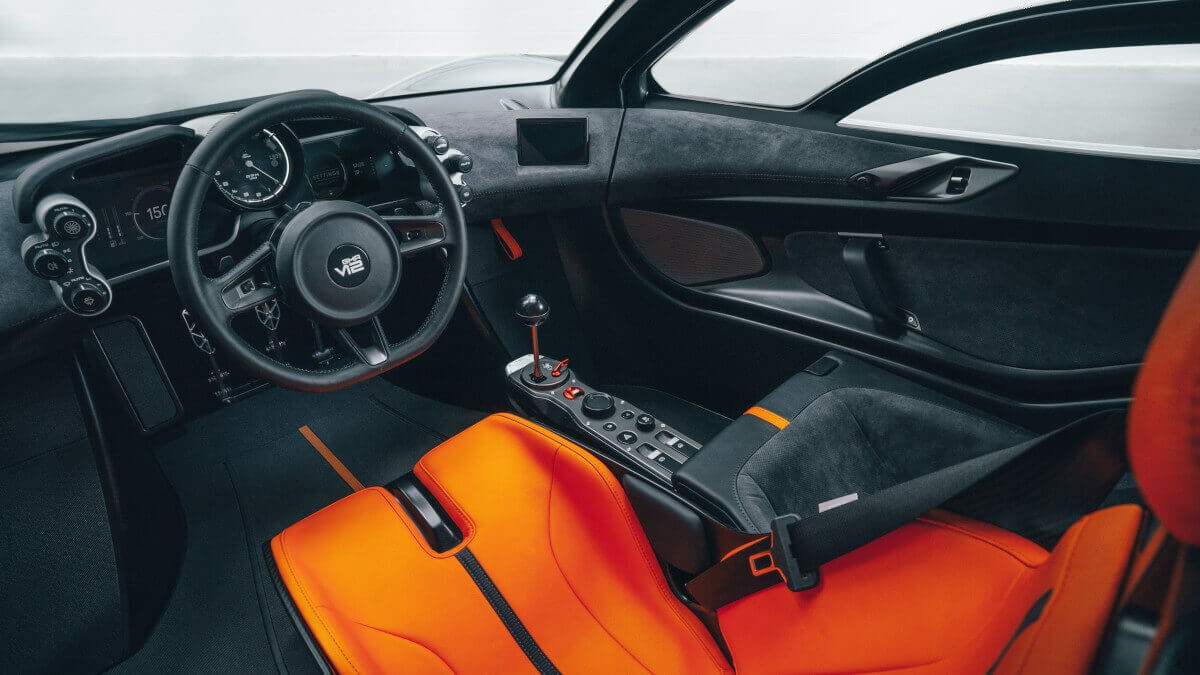







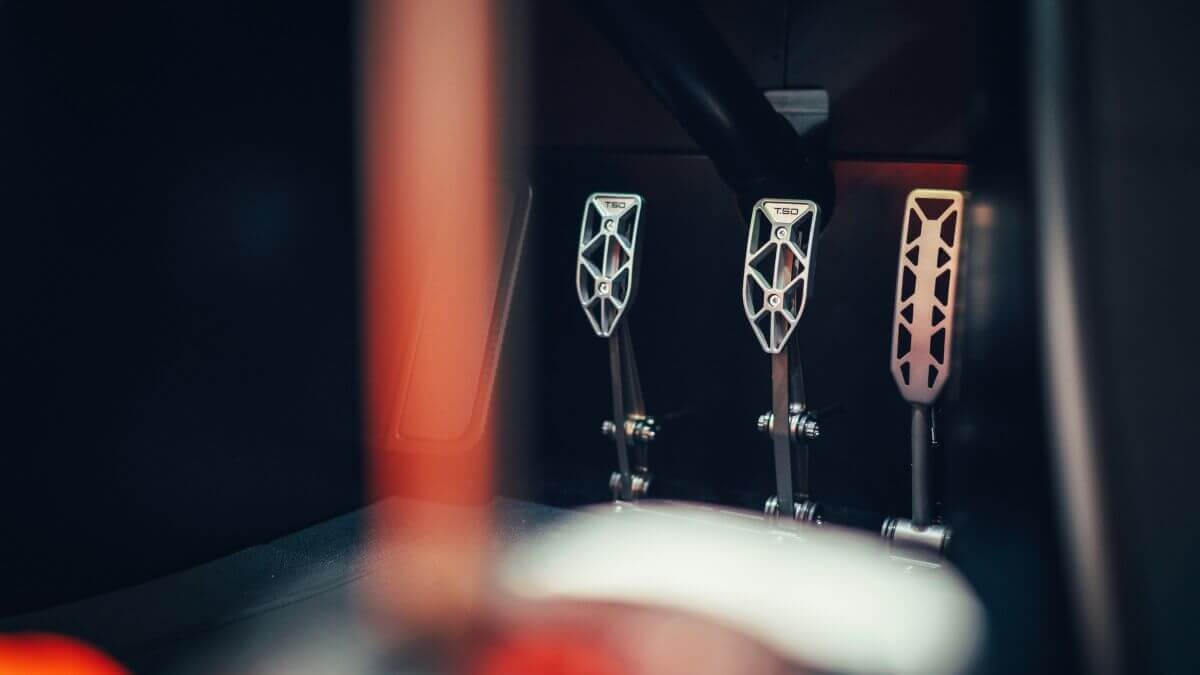



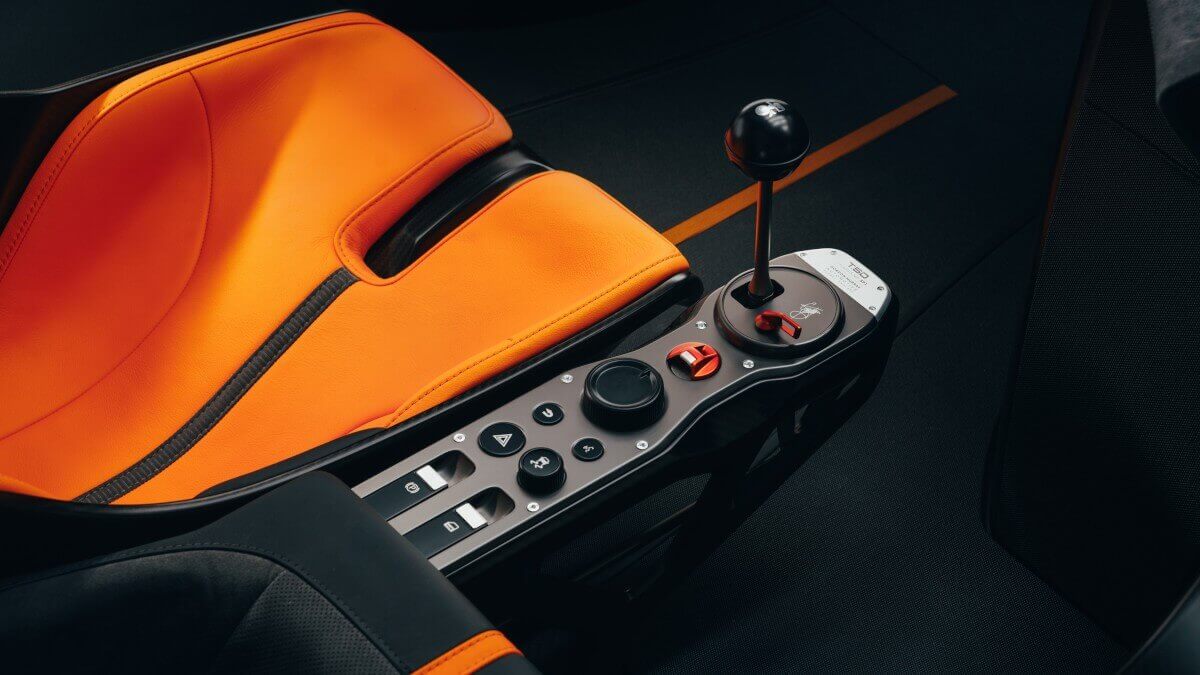



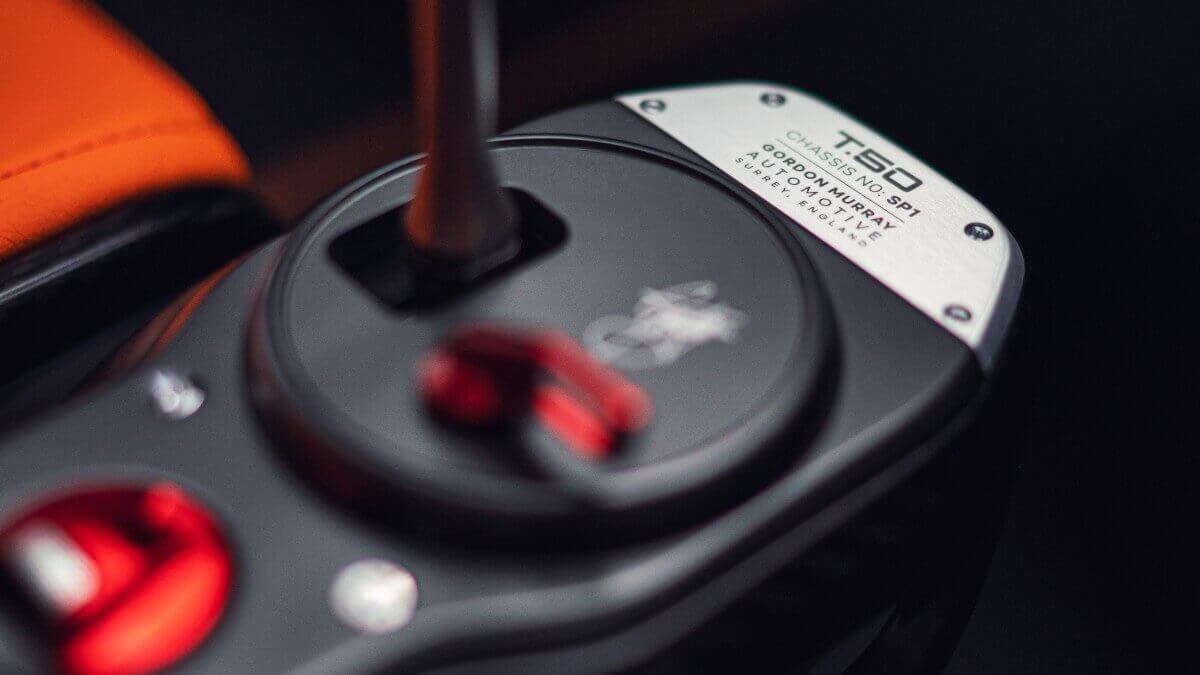











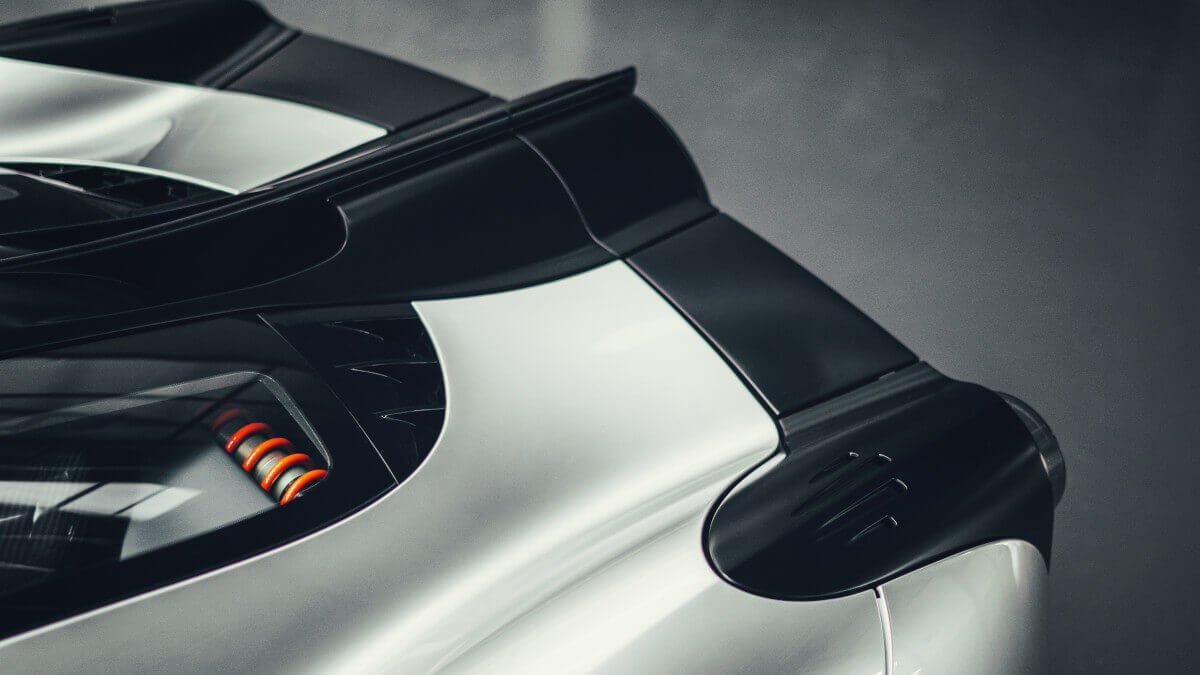



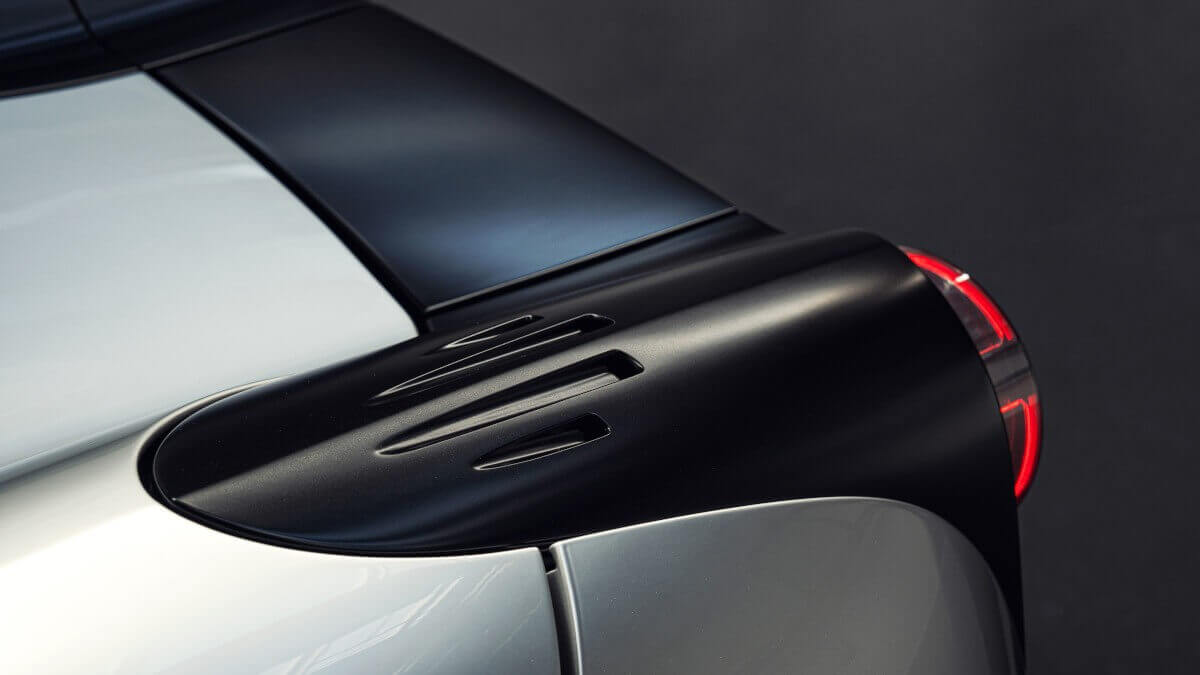



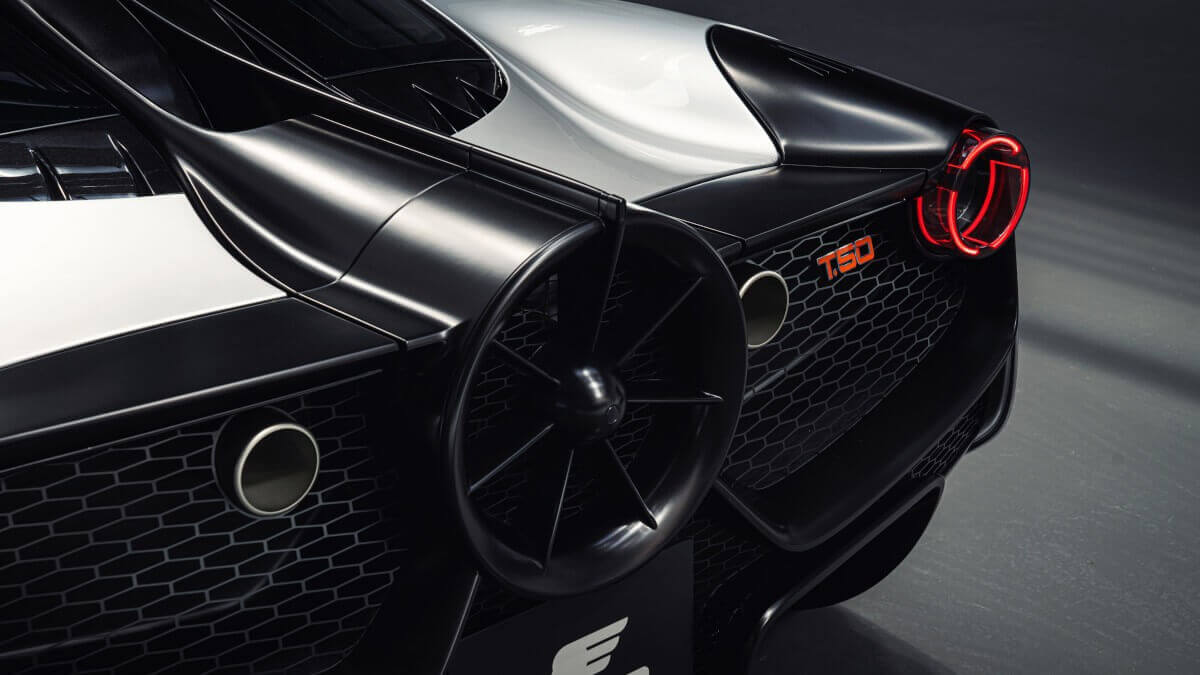



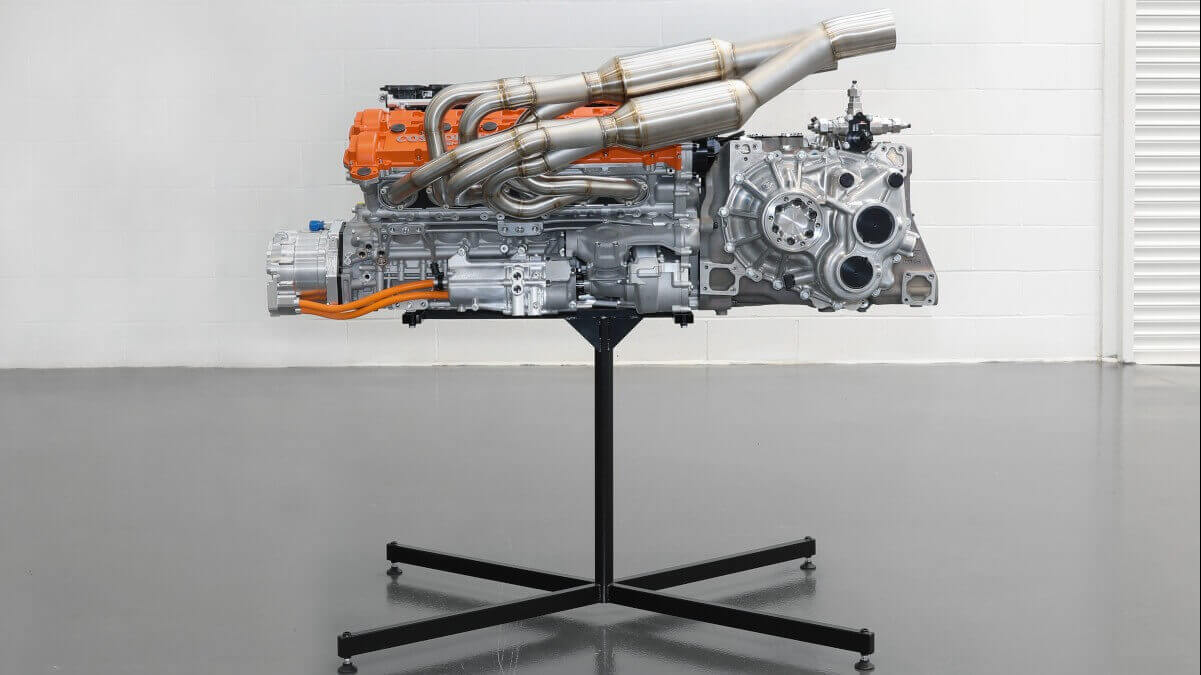



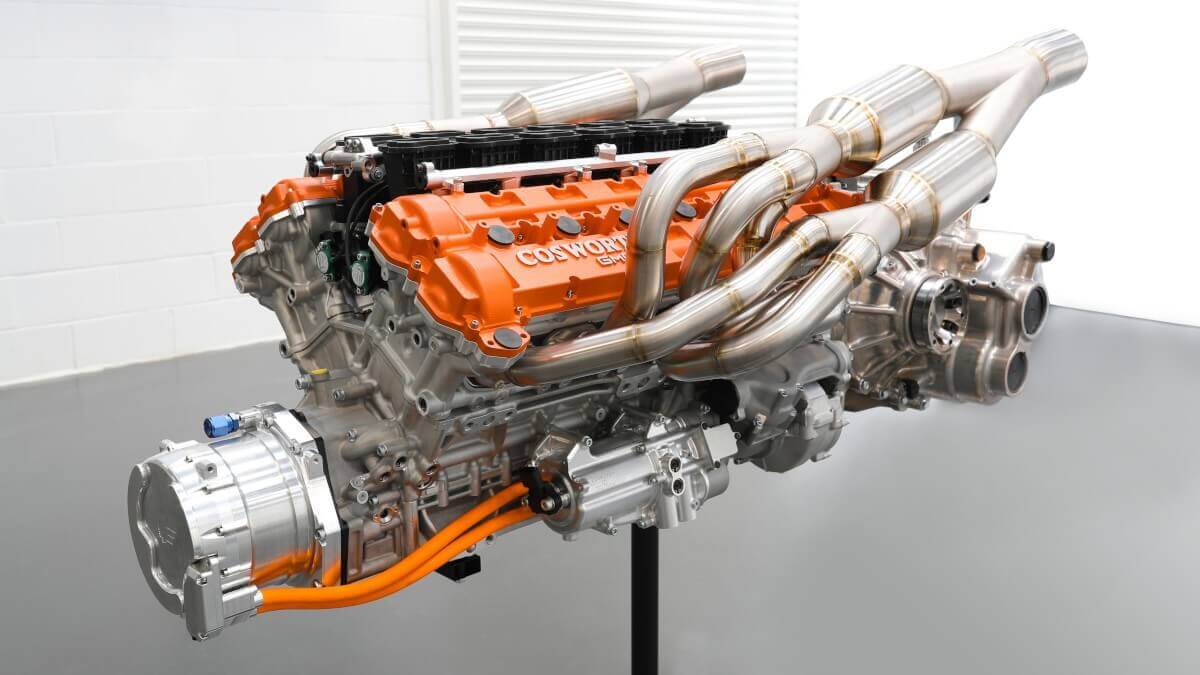



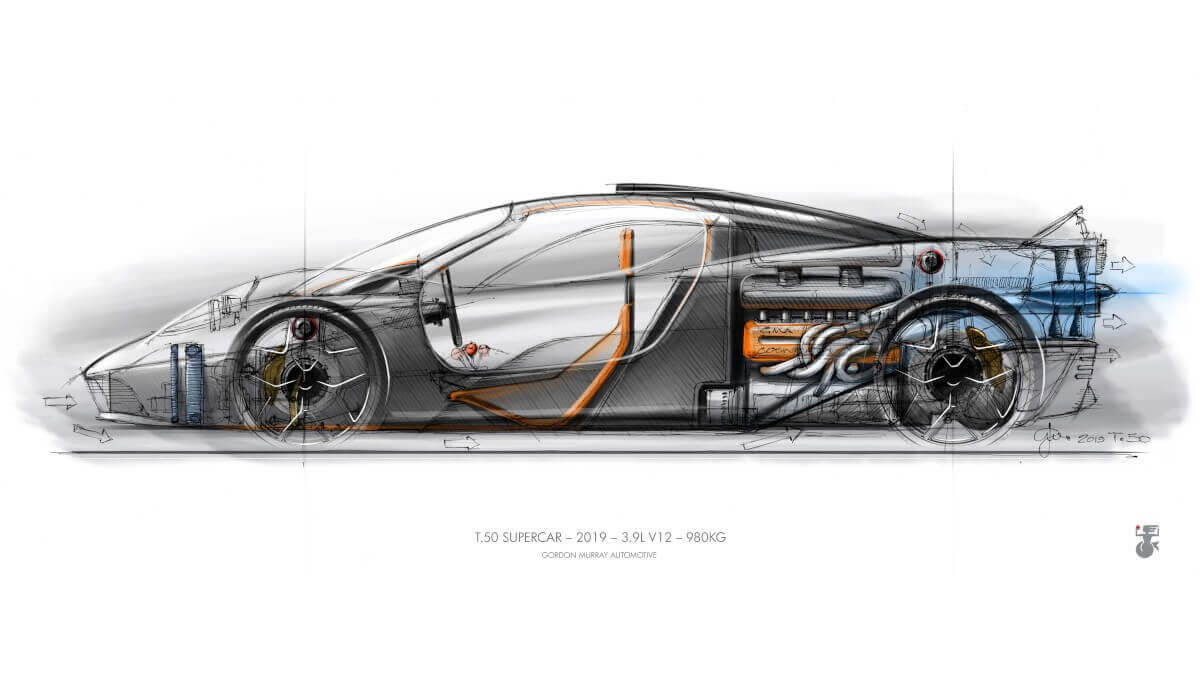



Visually, the sports car remains rather well-behaved, except for one detail at the rear. In the center between the rear lights you can see a 400 millimeter diameter fan wheel. Instead of the classic wings or spoilers used by other supercars today, the body of the Gordon Murray project features smooth surfaces with large glass areas extending into the roof. The technology of the Brabham BT46B comes into play here once again, with the fan blower at the rear sucking the air under the car and, in combination with active aerodynamic elements on the underbody and two dynamic rear spoilers, providing downforce in all driving situations. In driving mode, this pressure is up to 50 percent higher than that of comparable sports cars, and when braking, it is even 100 percent higher, which means that the braking distance from 150 mph is ten meters shorter. The driver can adjust the T.50 to his desired driving dynamics via six modes that can be selected from the cockpit (‘Auto’, ‘High Downforce’, ‘Streamline’, ‘Braking’, ‘Test’ and ‘V-Max Boost’). In Streamline mode, the turbine creates a virtual longtail, while in ‘V-Max Boost’ mode it increases the pressure in the air intake, increasing the engine output to 700 hp.
Inside, the GMA T.50 offers not only the three seats, but above all analog switches and levers. The footwell contains three ultra-light titanium pedals, and the gearshift lever for the manual six-speed transmission, including the shift gate, has been given a visual and technical polish by Gordon Murray to provide the best possible shifting feel. ESP and traction control can be deactivated at the touch of a button to give the driver complete control. Passenger seats are firmly integrated into the monocoque, while the driver sits on a thin, ultra-light carbon shell. There is also a 286-liter trunk under the front hood, which should be sufficient for weekend trips. However, only 100 customers worldwide will benefit from a new Gordon Murray Automotive T.50 – provided they can part with at least £ 2,360,000 plus tax. Each car is personally created in close collaboration with the chief designer himself to make them as individual as possible. Production is scheduled to start in January 2022.
Images: Gordon Murray Automotive




